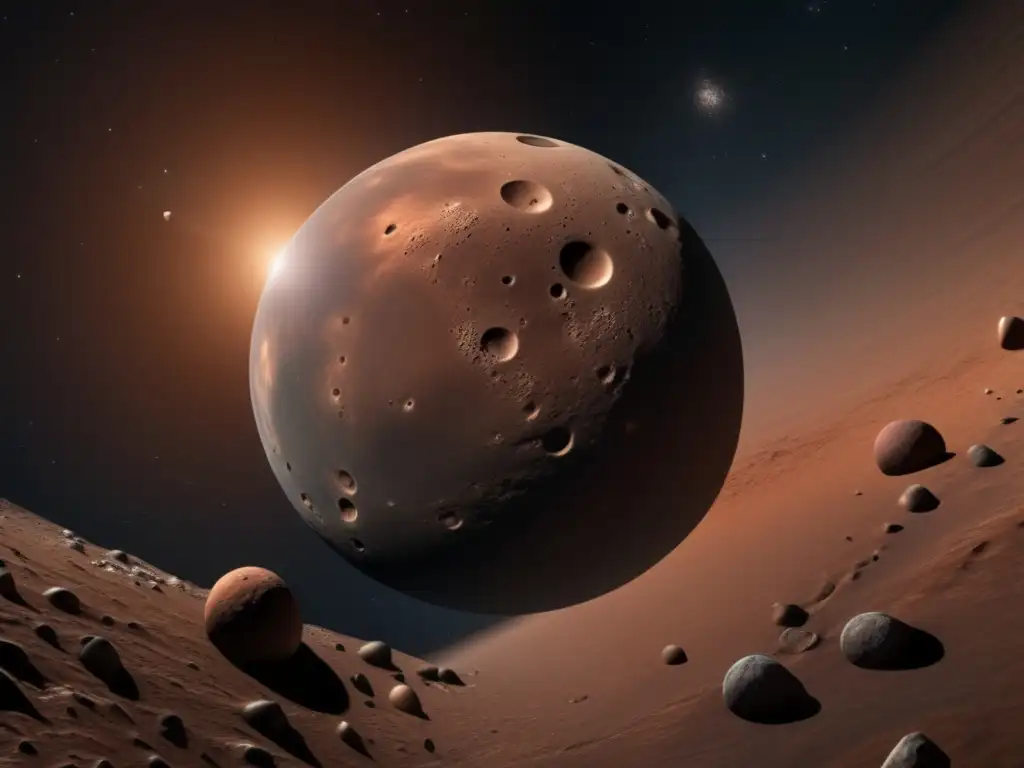Unveiling Sedna: A Profile Of One Of The Most Distant Asteroids Known

Introduction
Asteroids have always fascinated astronomers and scientists due to their unique characteristics, sizes, and histories. With over 1 million known asteroids in our solar system, each asteroid has a different story to tell. One of the most distant asteroids known is Sedna. Discovered in 2003, Sedna is a large icy object that orbits the sun in an extremely elongated path. In this article, we will explore the fascinating profile of Sedna and all its noteworthy aspects.
Discovery and Naming of Sedna

Discovery
Sedna was discovered on November 14th, 2003, by a team of astronomers led by Mike Brown of Caltech. The discovery was made using the Samuel Oschin Telescope at the Palomar Observatory in California.
Naming
The asteroid is named after the Inuit goddess of the sea and marine animals, Sedna. According to Inuit mythology, Sedna lived in the arctic ocean and was responsible for providing food to her people. She was also known for her fierce temper and had the ability to summon the sea creatures to do her bidding. The name Sedna was chosen to honor the Inuit culture and highlight the significance of the asteroid's discovery.
Physical Characteristics of Sedna

Size and Shape
Sedna is classified as a dwarf planet and has a highly elongated and oval-shaped orbit around the sun. The diameter of Sedna is estimated to be between 1000 and 1600 kilometers, making it one of the largest objects in the trans-Neptunian region.
Composition
Sedna is primarily composed of ice and rock, with its surface being covered by a layer of frozen methane and water. The asteroid's surface is relatively bright and is most likely made up of a mixture of different ices and rock. Sedna is also believed to have a rocky core surrounded by a thick mantle of ice.
Distance from Earth
Sedna is one of the most distant known objects in our solar system, with an average distance of approximately 86 Astronomical Units (AU) from the sun. To put this in perspective, 1 AU is equivalent to the average distance between the Earth and the Sun, which is around 93 million miles. This means that Sedna is over 8 billion miles away from Earth, making it extremely challenging to observe and study.
Orbit and Motion of Sedna

Orbital Characteristics
Sedna has a highly elliptical and inclined orbit, which takes approximately 11,400 years to complete one revolution around the Sun. The eccentricity of its orbit is as high as 0.85, which means that it travels much closer to the sun at perihelion than Pluto, but far beyond Neptune's orbit at aphelion.
Interaction with Other Objects
Sedna's orbit is unique compared to other known asteroids. It is not influenced by any of the giant planets, and its closest approach to the sun occurs far beyond the orbit of Neptune. Some scientists have suggested that Sedna's unusual orbit could be a result of an undetected massive planet in the outer solar system, which is influencing its path.
Discovery of Other Objects
Sedna's discovery has led to the detection of other objects in the solar system beyond Neptune. These objects are collectively known as trans-Neptunian objects and include dwarf planets like Pluto, Makemake, Haumea, and Eris. The discovery of these objects has provided insight into the early formation of our solar system.
Scientific Significance and Study of Sedna

Possible Origin
The origin of Sedna remains a mystery to scientists, with some suggesting that it could be a remnant of the early solar system. Others believe that it could have originated from the Oort cloud, which is a hypothetical spherical cloud of comets located at the outermost regions of our solar system.
Exploration of Sedna
Due to its immense distance from Earth, no spacecraft has been sent to explore Sedna. However, the James Webb Space Telescope, set to launch in 2021, may be able to observe Sedna in greater detail and provide more insights into its composition, physical characteristics, and origin.
Importance in Astrology and Astronomy
Sedna has significant cultural and spiritual significance to many indigenous groups, including the Inuit people. Its discovery has also provided valuable insights into the formation and evolution of the solar system, helping us better understand our place in the cosmos.
Frequently Asked Questions

-
What is Sedna, and where is it located?
Sedna is a large asteroid located in the outermost regions of our solar system, beyond the orbit of Neptune. Its distance from the sun varies between 76 and 937 astronomical units (AU).
-
What is Sedna made of?
Sedna is primarily composed of ice and rock, with its surface being covered by a layer of frozen methane and water.
-
What is the significance of Sedna's discovery?
Sedna's discovery has provided valuable insights into the formation and evolution of the solar system, as well as cultural and spiritual significance to many indigenous groups.
-
Has any spacecraft visited Sedna?
No, no spacecraft has been sent to explore Sedna due to its immense distance from Earth.
-
What is Sedna's orbital path?
Sedna has a highly elongated and inclined orbit, taking approximately 11,400 years to complete one revolution around the sun.
Conclusion
Unveiling Sedna has provided us with valuable insights into the formation and evolution of our solar system, as well as spiritual and cultural significance to many indigenous groups. Despite being one of the most distant asteroids known, Sedna remains a fascinating and mysterious object that we continue to learn more about through new technology and research.
Thank you for exploring Sedna with us. We encourage you to share your thoughts, ideas, and questions in the comments section below!
Additional Resources

For more information on asteroids, check out NASA's Asteroid Watch site: https://www.jpl.nasa.gov/asteroidwatch/
 Hebe: A Source Of Meteorites? – Understanding Its Scientific Relevance
Hebe: A Source Of Meteorites? – Understanding Its Scientific Relevance Kalliope And Linus: An Asteroid And Its Moon
Kalliope And Linus: An Asteroid And Its Moon An Examination Of Borrelly: A Comet-Like Asteroid
An Examination Of Borrelly: A Comet-Like AsteroidIf you want to discover more articles similar to Unveiling Sedna: A Profile Of One Of The Most Distant Asteroids Known, you can visit the Asteroid Profiles category.
Leave a Reply

Articulos relacionados: